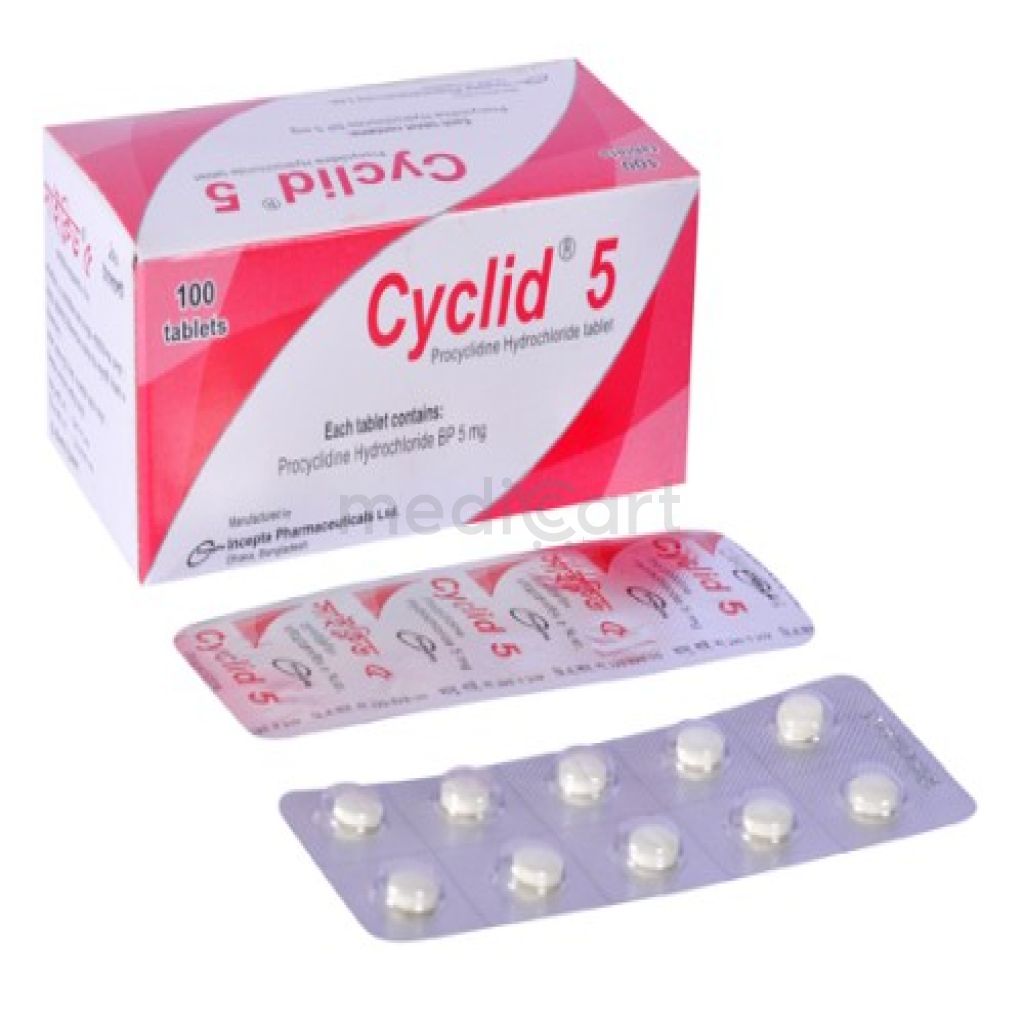

Perkinil 10mg/2ml
Injection
Pack Size :
1 Injection x 1 Strip
Generics :
Procyclidine Hydrochloride
Manufacturer :
Square Pharmaceuticals Ltd.
Best Price *
TK
35.20
* Delivery will be done in Dhaka city only.
More Information About - Perkinil 10mg/2ml
Description
Generic Name
Procyclidine HydrochloridePrecaution
Patient w/ mental disorders, CV disease (e.g. tachycardia, cardiac arrhythmias, hypertention, hypotension). Hepatic and renal impairment. Avoid abrupt withdrawal. Elderly. Pregnancy and lactation. Patient Counselling This drug may cause blurred vision, dizziness, confusion or disorientation, if affected, do not drive or operate machinery. Monitoring Parameters Monitor symptoms of extrapyramydal syndrome or Parkinson's disease, pulse, anticholinergic effects (e.g. CNS, bowel and bladder function).Indication
Parkinsonism, Drug-induced extrapyramidal syndromeContra Indication
Urinary outflow obstruction, prostatic hyperthrophy, narrow-angle glaucoma, paralytic ileus and pyloric stenosis.Dose
N/ASide Effect
Dry mouth, mydriasis, blurred vision, lightheadedness, giddiness, disorientation, GI effects (e.g. nausea, vomiting, epigastric distress, constipation), allergic reaction (e.g. rash), muscular weakness; vertigo, confusion, hallucinations at high doses; tremor, acute suppurative parotitis.Pregnancy Category
Name : C
Description
Animal reproduction studies have shown an adverse effect on the fetus and there are no adequate and well-controlled studies in humans, but potential benefits may warrant use of the drug in pregnant women despite potential risksMode of Action
Procyclidine is a tertiary amine antimuscarinic which acts by blocking excess acetylcholine at cerebral synapses. It also exhibits direct antispasmodic effect on smooth muscle.Interaction
Increased plasma concentrations w/ paroxetine. Enhanced anticholinergic action w/ MAOIs and other anticholinergic drugs. Reduced therapeutic effect w/ cholinergic drugs. May antagonise the effect of parasympathomimetic agents. May reduce the absorption and therapeutic effect of sublingual or buccal nitrate tab. May reduce the efficacy of levodopa. May antagonise the GI effects of cisapride, domperidone and metoclopramide. May potentiate the vagolytic effects of quinidine. May reduce the absorption of ketoconazole.Pregnancy Category Note
N/AAdult Dose
Oral Parkinsonism and drug-induced extrapyramidal syndrome Adult: As hydrochloride: Initially, 2.5 mg tid, increased gradually by 2.5-5 mg every 2-3 days if required. Maintenance: 10-30 mg/day in 3-4 divided doses. Up to 60 mg daily may be required in some cases. Parenteral Parkinsonism and drug-induced extrapyramidal syndrome Adult: Emergency cases: IV admin: 5-10 mg, higher doses may be needed; IM admin: 5-10 mg as a single dose, may repeat after 20 minutes if needed, to a max of 20 mg daily. Elderly: Lower doses are required.Child Dose
Oral Dystonia in children Child: 7-12 yr: 1.25 mg tid; 12-18 yr: 2.5 mg tid. For emergency cases, a single dose may be given via IM or IV inj: <2 yr: 0.5-2 mg; 2-10 yr: 2-5 mg and 10-18 yr: 5-10 mg.Renal Dose
N/AAdministration
N/ADisclaimer
The information provided herein are for informational purposes only and not intended to be a substitute for professional medical advice, diagnosis, or treatment. Please note that this information should not be treated as a replacement for physical medical consultation or advice. Great effort has been placed to provide accurate and comprehensive data. However, Medicart along with its authors and editors make no representations or warranties and specifically disclaim all liability for any medical information provided on the site. The absence of any information and/or warning to any drug shall not be considered and assumed as an implied assurance of the Company.







